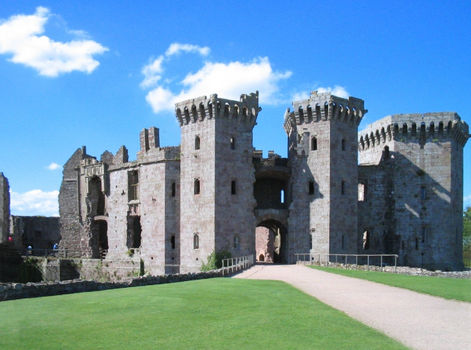Raglan Castle
Raglan Castle is a late medieval castle located just north of the village of Raglan. The modern castle dates from between the 15th and early 17th centuries, when the successive ruling families of the Herberts and the Somersets created a luxurious, fortified castle, complete with a large hexagonal keep, known as the Great Tower or the Yellow Tower of Gwent. Surrounded by parkland, water gardens and terraces, the castle was considered by contemporaries to be the equal of any other in England or Wales.
Following the Norman invasion of Wales, the area around the village of Raglan was granted to William FitzOsbern, the Earl of Hereford. Some historians suspect that an early motte and bailey castle may have been built on the Raglan site during this period.
The current Raglan Castle was begun by Sir William ap Thomas. In 1432 William purchased the manor of Raglan, where he had already been staying as a tenant, and commenced a programme of building work that established the basic shape of the castle as seen today, although most of, with the exception of the South Gate and the Great Tower, was later built over.
During the English Civil War the castle was held on behalf of Charles I but was taken by Parliamentary forces in 1646. In the aftermath, the castle was slighted, or deliberately put beyond military use; after the restoration of Charles II, the Somersets declined to restore the castle.
Raglan Castle became first a source of local building materials, then a romantic ruin. It now attracts visitors as a modern tourist attraction.













